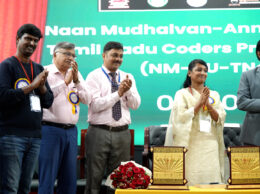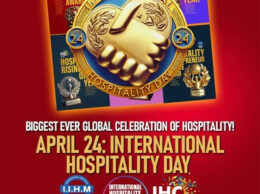Mumbai: They say fashion is like eating, you do not have to stick to the same menu. The ever-changing styles and patterns in the world of fashion, as centuries have passed by, is only proof of this fact. The different eras of fashion have brought unique and one-of-a-kind style staples to the forefront. Here is a quick walk down memory lane to understand the trends that ruled the roost as different eras passed by.
The 1660s: Decorative but Practical
By the second half of the 16th century, merchants were importing a wide variety of fabrics, textiles and dyes. Individuals had many fabrics to choose from and accessories to complement their looks with. Garments went from restrictive to comfortable and back to restrictive again. Fashion trends in the early 17th century revolved around doublets for men and bodices for women. The skirts of women were full and rigid in shape while the garments for men and women were both laden adorned with ornamentation. This included jewelry, lace and even contrasting fabrics.
Through the time span, padding was removed for doublets and bodices. Women’s sleeves started to rise while the breeches of men shed their bagginess. Up until the 1715, the French influence and its vertical lines, high heeled shoes, high rolled boots, fancy lace collars took center stage.
The 1900s: Ever changing styles
Frilled puffy blouses, fluted skirts, a slightly high waistline and S-shaped corsets were highly popular for women during the 1900s. Men, on the other hand, wore three-piece lounge suits with cloth caps or bowler. Jackets were narrow in shape and came with high lapels. There was also the influence of Hollywood styles in this mix.
Towards the end of the decade, fashion moved to girdles, long skirts, blazers and wool sweaters. The 1940s saw the arrival of the bikini. The 1960s saw a dramatic change in men’s wear. This included fun elements such as slim-fitting trousers, boots and collarless jackets. The 1970s brought a blend of hippie and mod to the closet. With this came the jumpsuit, leotards and denim jackets and ripped jeans the years passed by. For men, it was coats, waistcoats and trousers as well as shirts and neckties.
The 2000s were all about an amalgamation of vintage styles as well as ethnic and global clothing. Young people were seen in hip-hop fashion while boho was a vibe that garnered huge momentum. Through the decade, the major fashion trends women held on to were branded tracksuits, low rise jeans, fishnet clothes, and popcorn shirts.
It was also a time when celebrity obsession reached new heights. So it was also all about crop tops, bandeaus in tropical prints, halter-neck tops, V-shaped jumpers, pantsuits and cardigans saw quite a bit of the limelight. For men, fashion trends in the early 2000s revolved around extremely distressed jeans, popped collars, t-shirts, cargo shorts and baggy pants.
Although these were some of the major fashion trends that ruled in the 1660s, 1900s and 2000s, a lot of these fashion trends are being revisited in present times. It just goes to show that while fashion is a continuously evolving process, it is just as timeless and has the zeal and spunk to stun in today’s fashion scene.
At Arch College of Design and Business, a leading Fashion Designing Institute in Jaipur, students are motivated to imbibe a natural flair for fashion by understanding new trends and taking inspiration from the old. This is done through detailed and practical assignments and tasks. This ensures you gain the expertise and background required to excel in this field.









